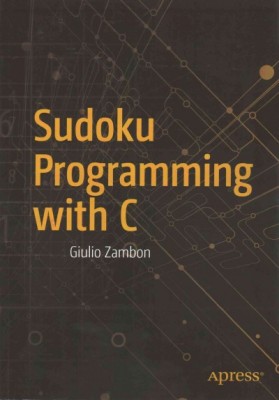| Sudoku Programming with C Contributor(s): Zambon, Giulio (Author) |
|
 |
ISBN: 1484209966 ISBN-13: 9781484209967 Publisher: Apress OUR PRICE: $52.24 Product Type: Paperback - Other Formats Published: March 2015 |
| Additional Information |
| BISAC Categories: - Computers | Programming Languages - C - Computers | Computer Science - Computers | Programming - Games |
| Dewey: 005.133 |
| LCCN: 2015431518 |
| Physical Information: 0.63" H x 7" W x 10" (1.15 lbs) 300 pages |
| Descriptions, Reviews, Etc. |
| Publisher Description: Sudoku Programming with C teaches you how to write computer programs to solve and generate Sudoku puzzles. This is a practical book that will provide you with everything you need to write your own books of Sudoku Classic and Samurai puzzles. But be warned: after reading it, you'll discover that the puzzles in your local paper are not so challenging after all We like Sudokus because they test our capacity to recognize and interpret patterns. But how are the clues generated? Where do those quasi-symmetrical configurations come from? When the author explored the Web to find out, he discovered that there were many sites that explained how to solve Sudokus, but none that told him how create them. He also saw many sites and apps to play Sudoku, but, perhaps not surprising, no indication of how they worked. So, he had to develop his own applications in order to find out. And, from the very start, he decided that he would publish the code for anyone else to use and perhaps tinker with, but the author wrote it in such a way that also lets readers with limited knowledge of programming techniques understand it. In fact, you could decide to start generating thousands of puzzles almost immediately, and go through the explanations of algorithms and techniques later, a bit at a time. The author chose to write the application in 'plain old C' because he wanted to make the code accessible to as many people as possible. In this book, you will find an explanation of all solving strategies, and the code to implement them. Writing the Solver application was more difficult than writing the Generator, because it required designing and implementing each strategy separately. However, the author wanted to include a solving program capable of listing the strategies necessary to solve any particular puzzle. He also wanted to check whether a puzzle was solvable analytically, without any guessing. This book includes the full listings of both the Generator and the Solver, and explanations of all C modules, with walk-throughs and examples. |